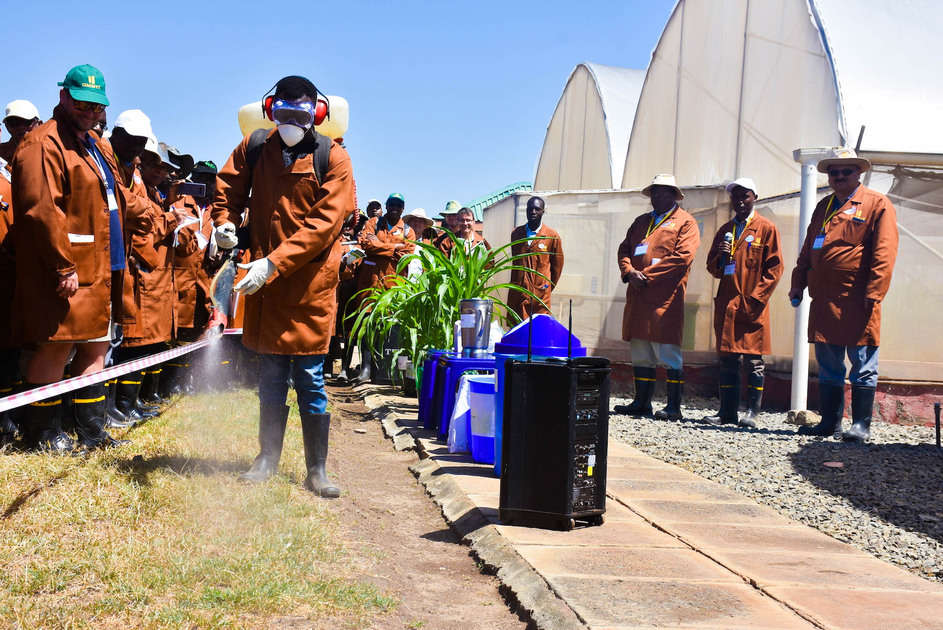Battling devastating viral diseases, also in plants
- From
-
Published on
28.05.20
- Impact Area

When a maize lethal necrosis (MLN) outbreak happened in Kenya in 2011, scientists knew they needed to act fast. This viral disease, new to Kenya, was decimating maize fields. Within a few years, the viral disease spread rapidly in eastern Africa, through both insect vectors and contaminated seeds. If the virus were to spread into southern or West Africa, it would spell disaster for the smallholder farmers across the continent who depended on maize as a staple crop and for their family’s income and livelihoods.
The International Maize and Wheat Improvement Center (CIMMYT) and its partners immediately took action to impose a strict seed quarantine and restrict the movement of seed between eastern Africa and other regions in Africa. In addition, they worked intensively on developing and disseminating improved maize cultivars with tolerance or resistance to MLN, undertook extensive surveillance efforts, and sensitized partners on the importance of producing and commercializing MLN-free seed.
Due to these efforts, in the last nine years MLN has not been reported in sub-Saharan Africa outside of eastern Africa.
On the occasion of a recent publication on Virus Research about how MLN was contained, we interviewed B.M. Prasanna, director of the Global Maize Program at CIMMYT and the CGIAR Research Program on Maize (MAIZE), to discuss the MLN success story, the global COVID-19 crisis, and the similarities in the challenge to tackle plant and human viral diseases.
Related news
-

ICRISAT to Deliver World-Class Services as CGIAR’s Breeding Resources South Asia Hub
International Crops Research Institute for the Semi-Arid Tropics (ICRISAT)07.07.25-
Biodiversity
-
Food security
Strategic collaboration to scale innovation and deliver harmonized, high-quality support across CGIA…
Read more -
-

Shaping policy changes for a sustainable cropping system in Uttar Pradesh, India
International Rice Research Institute (IRRI)03.07.25-
Food security
by Dr. Proloy Deb and Dr. Swatantra Dubey The Central Plain region of Uttar Pradesh…
Read more -
-

KOICA, UPLB, IRRI Partnership Establishes a Genomic Powerhouse to Future-Proof Agriculture
International Rice Research Institute (IRRI)01.07.25-
Food security
LOS BAÑOS, Philippines (26 June 2026) — KOICA, UPLB, and IRRI came together to showcase…
Read more -
